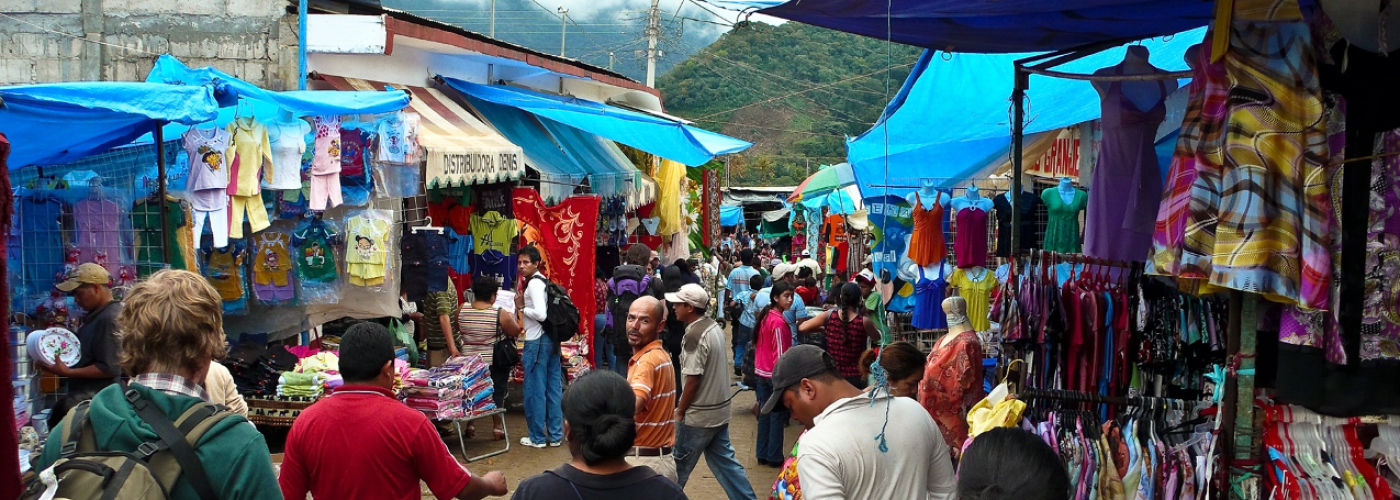Engaging Border Communities in Trade and Investment Programming: Why and How
Image

This post was written by Jonah Belser for USAID’s Trade and Competitiveness Activity (TCA).
Communities located in border regions are economically significant across the developing world. Border businesses provide vital products and services to people in transit—from international traders to migrant families—especially where cross-border trade and travel procedures are slow-moving and inefficient. These businesses range from customs brokerage and currency exchange services to local restaurants, hotels, markets, and more.
For many smaller countries, border regions are vital access points where essential products like food, medicine, and raw materials are sourced from larger regional markets, such as China and India. Border economies can also be engines for income generation and employment; according to one estimate, nearly 40 percent of urban residents in West Africa live and work less than 100 km from a national border.
However, as trade facilitation (TF) initiatives reduce the time individuals and goods spend at border crossings, they can have disruptive effects on border communities’ livelihoods. For the past year, USAID’s Trade and Competitiveness Activity has been undertaking research to demonstrate why and how donor agencies and implementing partners should ensure that border communities benefit from the full breadth of economic growth programming.
Below, we discuss three ways international development programs can improve the livelihoods of border communities in a TF context.
1: Intentionally and Meaningfully Integrate Border Economies in Standard Trade and Investment Programming
Existing programming provides a foundational template for activities targeting border communities. For any project being designed for a country or region known to have sizeable border populations or fluid border dynamics, donors and implementing partners should identify and engage border communities as early as possible. By considering the needs of border communities during project design, donors can maximize the positive effects of trade facilitation in border communities while preventing disruption to border economies.
Any number of standard trade and investment interventions could be adapted to support or take into account local communities located at or near border areas—from support for trade policy reforms, to private sector skills trainings, access to finance, and beyond. Targeted non-trade-related activities (e.g., pertaining to health, education, etc.) may enrich these activities by creating better conditions for growth. Where a border economy is especially fragile or underserved, projects could even consider devoting an entire component or sub-activity to that border region; in other cases, it may be sufficient simply to prioritize border community engagement as part of project-wide social inclusion goals, or to capture border region impacts through monitoring, evaluation, and learning (MEL) processes.
2: Design Economic Growth Projects Explicitly for Border Communities
An alternate approach is to develop standalone projects for border communities. Unless economic opportunities in a given border area are particularly limited, project design teams may not see the need to dedicate an entire project to border communities. However, this approach can be useful when other economic growth projects are already underway but lack the timeframe, budget, or contractual flexibility to accommodate new interventions.
USAID’s Creando Resiliencia y Empleo para Comunidades en Entornos Remotos (CRECER) activity can serve as a useful example in this regard. This pilot project was launched in 2018 to address potentially disruptive effects of ongoing trade facilitation efforts in Ciudad Pedro de Alvarado, a Guatemalan border city. USAID, in alliance with the International Trade Centre (ITC), developed and implemented CRECER to transition informal businesses and workers displaced from the customs area toward alternative employment options. The activity later expanded to include initiatives focused on investment attraction and primary education.
3: Learn from National and Local Governments Addressing Challenges in Border Regions
The experiences of national and local governments are another source of best practices for promoting sustainable development in border communities.
Some countries, like Mexico, have free trade zones (also called free economic zones) designed to spur economic growth along their borders. To generate employment opportunities in these areas, governments provide targeted incentives, such as tax exemptions and higher minimum wages, to businesses and individuals who relocate there.
Other governments are building logistics and transport hubs to enhance cross-border supply chains and revitalize transportation infrastructure while integrating local businesses and creating jobs. Thailand’s Chiang Khong logistics center, which aims to be an important gateway to growing markets in neighboring Myanmar, Laos, Cambodia, and Vietnam, as well as the southern part of China, is one example.
When border challenges impact multiple sectors of society, or even countries beyond the two that flank a given border area, multi-sectoral and multi-stakeholder approaches can play a role. In the Lake Chad Basin, for instance, several Central African governments, multilateral organizations, and donors are collaborating to mitigate water security risks by building more resilient infrastructure and governance systems.
Taking Border Communities Seriously: A Path Forward
With global trade and refugee migrations hitting record highs in 2021, the centrality of border regions to international economics and security has never been clearer. However, border areas are not just locations of transit and trade; they are also places where people live and work, with complex—and sometimes unique—social, economic, and environmental circumstances.
Depending on the context, border communities may be important constituencies for development practitioners to engage and serve as they design and implement projects. By integrating border communities in standard trade and investment programming, designing economic growth projects explicitly for border communities, and learning from national and local governments addressing challenges in border regions, donors and implementing partners can make sure this often-overlooked stakeholder group gets the serious attention it deserves.
This piece draws upon a literature review and analytical paper on border communities produced by TCA for USAID’s Center for Economics and Market Development (EMD). In August 2022, TCA and Marketlinks will hold a Webinar to discuss lessons learned and project design approaches informed by this year-long research effort. This event, Optimizing the Impact of Trade Facilitation – Engaging Border Communities, will be facilitated by Jonah Belser, Senior Associate, SEGURA Consulting. Register here to Join the conversation on August 30, 2022.

